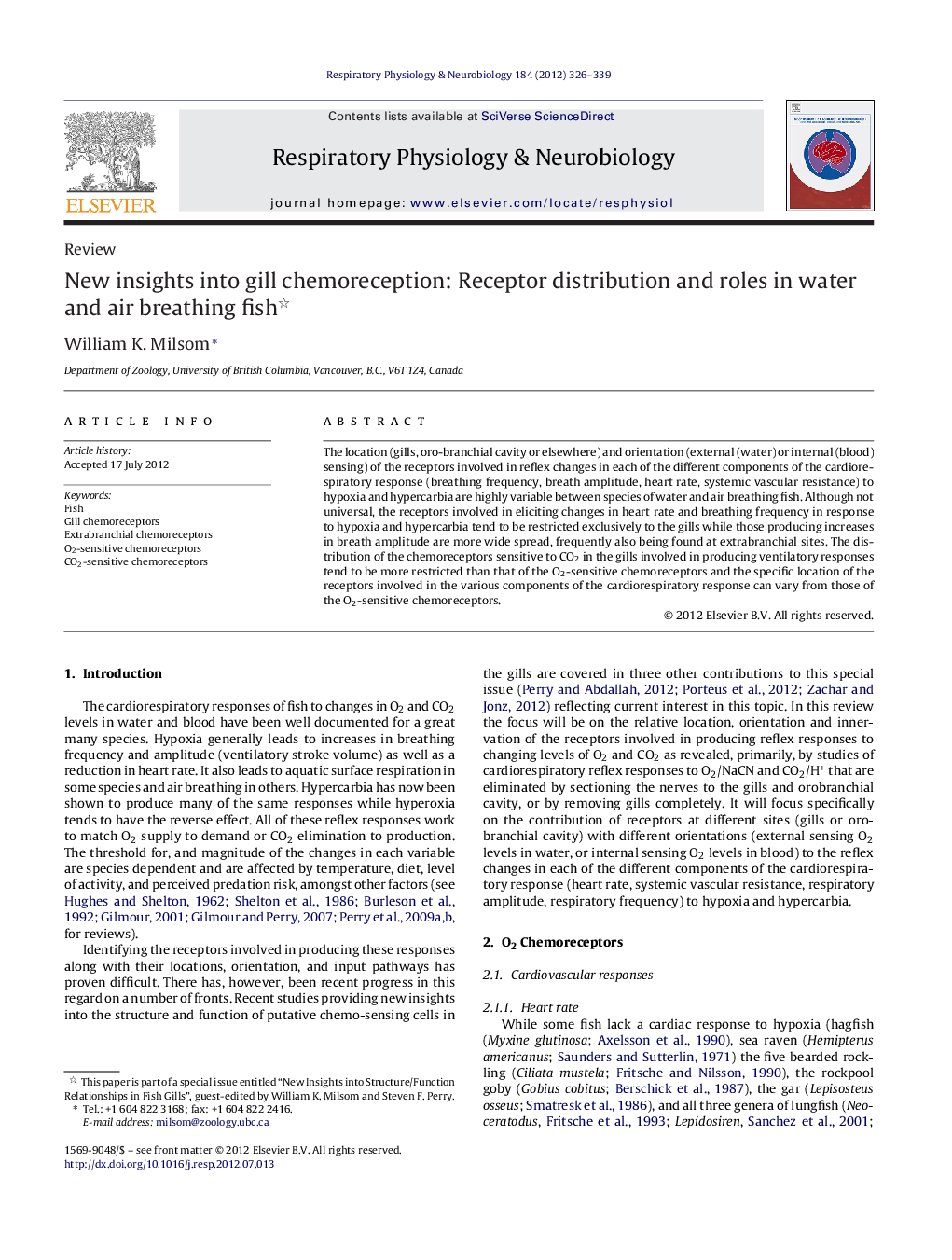| Article ID | Journal | Published Year | Pages | File Type |
|---|---|---|---|---|
| 2847367 | Respiratory Physiology & Neurobiology | 2012 | 14 Pages |
The location (gills, oro-branchial cavity or elsewhere) and orientation (external (water) or internal (blood) sensing) of the receptors involved in reflex changes in each of the different components of the cardiorespiratory response (breathing frequency, breath amplitude, heart rate, systemic vascular resistance) to hypoxia and hypercarbia are highly variable between species of water and air breathing fish. Although not universal, the receptors involved in eliciting changes in heart rate and breathing frequency in response to hypoxia and hypercarbia tend to be restricted exclusively to the gills while those producing increases in breath amplitude are more wide spread, frequently also being found at extrabranchial sites. The distribution of the chemoreceptors sensitive to CO2 in the gills involved in producing ventilatory responses tend to be more restricted than that of the O2-sensitive chemoreceptors and the specific location of the receptors involved in the various components of the cardiorespiratory response can vary from those of the O2-sensitive chemoreceptors.
► Chemoreceptors involved in reflex cardiorespiratory responses to hypoxia and hypercarbia are variable between species. ► Their location (gills, oro-branchial cavity, elsewhere) in water and air breathing fish are described. ► Their orientation (water or blood sensing) in water and air breathing fish are also described.
